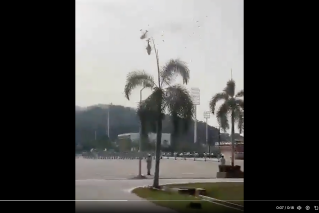At least 26 people have been confirmed dead and more than 170 others were missing after part of a Himalayan glacier broke off in northern India, triggering a devastating flood.
The surging water, ice and debris washed away parts of hydropower plants and bridges on Sunday morning in the Chamoli district of Uttarakhand in the Himalayas, some 2000 metres above sea level.
Uttarakhand police chief Ashok Kumar said 26 bodies had been recovered by Monday night, while 170 were still were still to be found.
Most of those killed or missing are believed to be power plant workers. Some 25 people had been saved by rescuers so far, Chief Kumar said.
Floodwaters carrying glacier chunks damaged two hydroelectric plants and five bridges on the Alaknanda river system and swept away roads and homes, forcing authorities to evacuate villages in the region.
At least 34 workers were trapped in a 2.5-kilometre tunnel at a power plant that had been cut off by the floods, mud and rocks, Power Minister RK Singh said.
“We have cleared our way some 70 metres into the tunnel and need to negotiate another 180 metres more to a bend in the tunnel where we hope the debris hasn’t entered and our men are still alive,” Mr Singh said.
“No communication has been established with them so far.”
Residents of the Raini village where the glacier collapsed said they were jolted by the loud sound and the sight of huge torrents of water and sludge in the river hurtling towards them.
“Before we could make out what was happening, the raging muddy waters of the river had devastated the landscape,” said 50-year-old Dharam Singh, according to the Tribune newspaper.
National and state disaster response teams, including army and navy divers, were deployed for the rescue effort.
Various theories have emerged as to what caused the glacier to burst, from parts of the glacier itself collapsing and releasing water, or an avalanche higher up crashing into a glacial lake, causing a surge of water and debris.
Environmentalists blamed the disaster on the rapid pace of development in the region and on climate change weakening the glacier.
Experts say environmental degradation from the widening of highways and building of power projects have made the region more vulnerable.
-AAP








